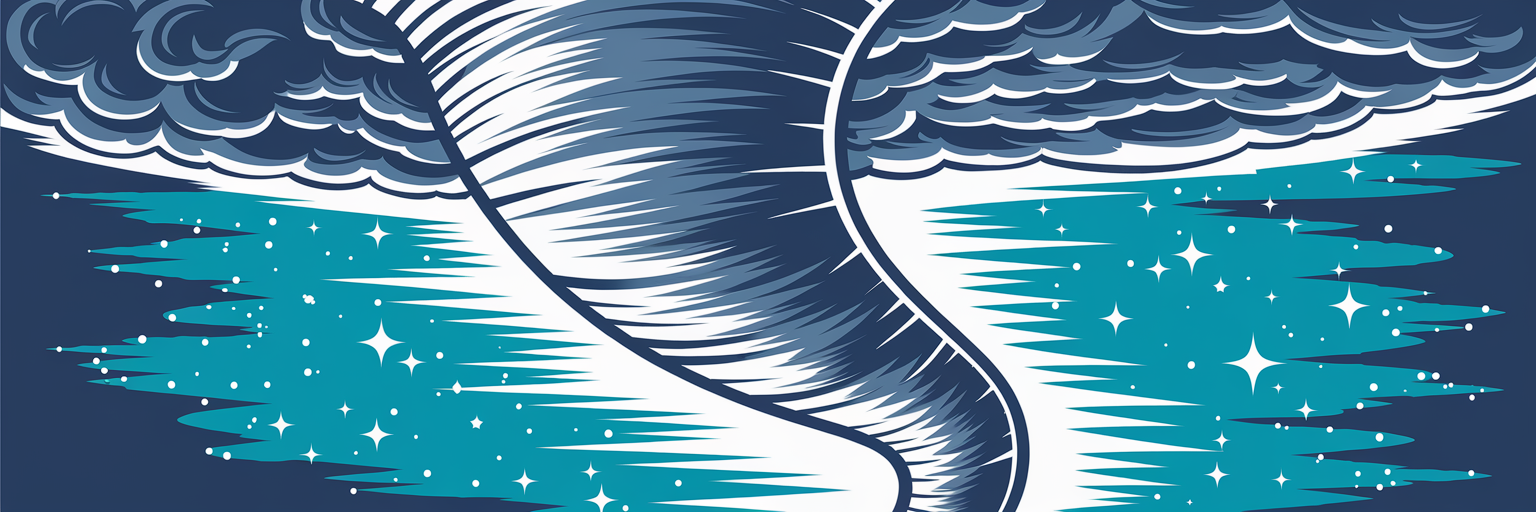Awareness. Consideration. Purchase. A happy little funnel dream that has been twisted up into a tornado that’s dropped us into the middle of what feels like a hundred yellow brick roads. Google, Amazon, YouTube, Instagram, TikTok, LinkedIn, Facebook… let’s BeReal - will X (formerly known as Twitter) mark the spot? Bing! — Are there any light bulbs on?
Gone are the days of neatly segmented stages guiding your ideal customer towards a purchase. The traditional marketing funnel, a helpful tool to visualize the customer journey in the past, is struggling to keep pace with the ever-evolving digital landscape.
As marketers, we understand the appeal of the funnel. It provided a clear, linear path to visualize the customer journey. But here's the secret: customers rarely follow a rigid path anymore.
The internet has fundamentally changed how consumers interact with brands. Imagine a customer scrolling through Instagram and discovers a captivating ad for your product. Intrigued, she clicks through, landing on your website for more information. Later, she might research competitors' pricing and offerings, while scanning TikTok for product reviews.
Why the Funnel Needs an Upgrade:
- Information Overload: Consumers are bombarded with content across numerous platforms—social media, search engines, review sites, and more. This constant exposure disrupts the traditional linear flow.
- Multiple Touchpoints: According to a survey by Google, more than 50% of customers are using five or more online sources before they buy—an all-time high. Customers can hop on and off your brand's journey at various points. They might discover you on Instagram, research your product on review sites, and finally purchase through your website.
- Rise of Influencers and User-Generated Content: Recommendations and reviews hold immense power. People trust their peers and online communities, influencing purchase decisions at any stage.
So, what do we do?
Enter the Customer Journey Map:
It's Always Sunny In Philadelphia | Season 4 Ep. 10: Pepe Silvia - FXX
Instead of a singular funnel, we need to embrace the customer journey map. This dynamic approach acknowledges the non-linear nature of modern consumer behavior.
Here's how it works:
- Identify Touchpoints: Map out all the potential points where a customer might interact with your brand—social media platforms, your website, email marketing, review sites, etc.
- Understand the "Why" Behind Each Touchpoint: Analyze the purpose each touchpoint serves. Is it for brand awareness, building trust, driving consideration, or facilitating a purchase?
- Unify Your Customer Data: Track all customer interactions to gain a complete picture of their journey. This includes where they engage with your brand, how they provide contact information, and where they ultimately make their purchases.
Benefits of the Customer Journey Map:
- Improved Targeting: By understanding where and how customers interact, you can tailor your marketing efforts to the most relevant platforms and stages of their journey.
- Strategy Revamp: Align your messaging with the specific needs of each platform or touchpoint. Informative blog posts on your website might be suitable for the "consideration" stage, while compelling product demonstrations on LinkedIn may work well for the "decision" phase.
- Deeper Customer Understanding: The map allows you to identify areas where customers might be dropping off to fine-tune your strategy to address those points.
The Takeaway:
The marketing funnel served us well for a time, but today's dynamic digital landscape demands a more nuanced approach. By embracing the customer journey map, we can create a strategic and holistic marketing strategy that resonates with today's ever-connected consumers.
Remember:
- Focus on building relationships: Customer loyalty thrives on trust and positive interactions.
- Be present where your audience is: Cater your content and messaging to the specific platforms your target audience frequents.
- Continuously adapt and iterate: The digital landscape is constantly evolving, so your marketing strategy must as well.

